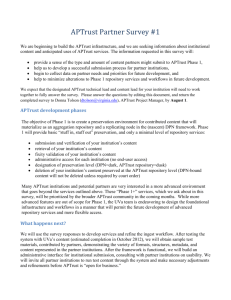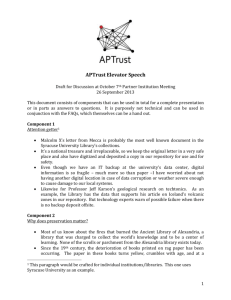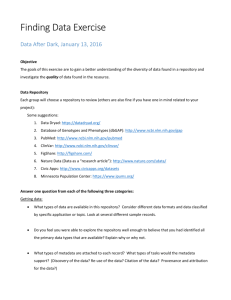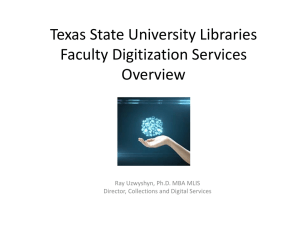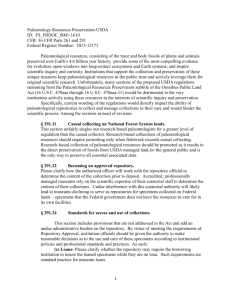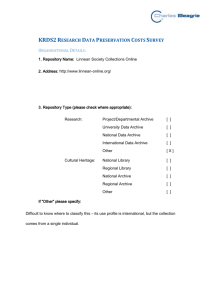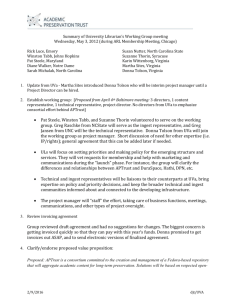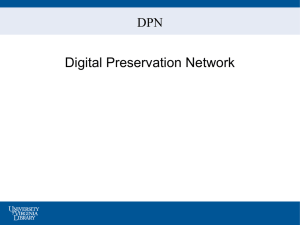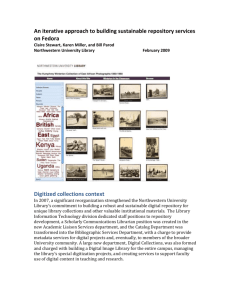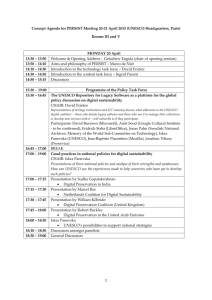Planning and Implementing a Digital Repository at
advertisement
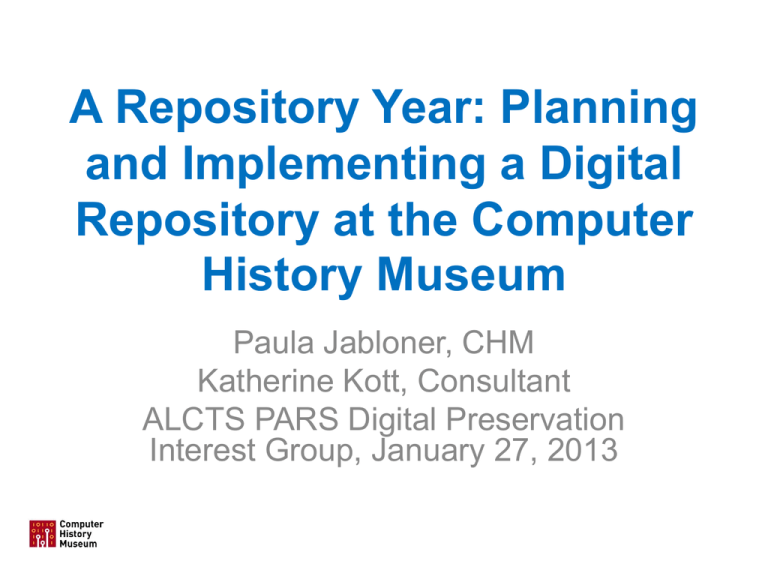
A Repository Year: Planning and Implementing a Digital Repository at the Computer History Museum Paula Jabloner, CHM Katherine Kott, Consultant ALCTS PARS Digital Preservation Interest Group, January 27, 2013 Topic summary • Project background • Creating functional requirements • Selecting repository software • Selecting storage infrastructure • Future plans “…we will define the digital repository as the systems and workflows that support digital asset management and digital preservation.” Digital Repository Best Practices for Cultural Heritage Institutions Computer History Museum by the numbers 1st permanent exhibit opened in 2011 60+ terabytes of digital objects including our truly unique historic software collection 15 terabytes anticipated yearly rate of growth 500+ oral histories 3,000 moving images 5,000 linear feet of archival materials 10,000 photos 35,000 artifacts CHM Ecosystem • MIMSY collections management system for permanent collection • HD video production team needs • Website for discovery • ~ 50 FTE Assumptions based on immediate needs & time constraints •Use existing tools and systems •Open source software No punch cards! •No additional resources •Preservation layer will be built on common commodity storage hardware that are modular and extensible •Creation of a digital repository is an on-going commitment by CHM The Digital Repository Team Katherine Kott, Ton Luong, Heather Yager, Paula Jabloner, Al Kossow, Vinh Quach. Project Charter Year One Objective Deliverable Understand the scope of CHM digital collections √ Inventory of current digital holdings Stabilize interim storage for digital collections 1/2 New interim storage system installed Identify and document best practices Establish policies and procedures for managing and preserving digital collections √ √ Consultant’s report Policy and procedure manual Ensure staff are familiar with digital collection management policies and procedures Training & education program for collections staff based on policy & procedures manual Evaluate and select software (digital asset √ management) system Evaluate and select digital preservation (storage √ infrastructure) management system Core Team software recommendation Core Team preservation system recommendation Model and test implementation of digital object management and preservation workflow √ Prototype system in place to support all phases of digital object lifecycle Share project findings with other organizations √ Present papers, share findings through blog posts, etc. Gather Requirements from Stakeholders OAIS Framewok: Four activity categories • Creation and Ingest • Metadata Management • Storage and Archival • Publishing and Information Retrieval Define functional and nonfunctional requirements • Functional requirement example: – Does the system support manual entry of minimal metadata? • Non-functional requirement example: – What are the infrastructure (hardware and software) requirements? Software selection • Evaluation of five open source software packages against functional requirements resulted in selection of… Storage numbers •Base 72 TB •Plus 96 TB Storage Infrastructure Lessons learned-recommendations • It is possible to get a prototype system up and running in one year • Hardware procurement was trickier than anticipated • A similar process/solution could be helpful for: – Small stand-alone museums and archives with limited resources – Cultural heritage organizations within larger institutions—especially those with diverse content Future plans • Additional funding from google.org will enable CHM to: – Complete testing of prototype infrastructure – Create procedures and workflows – Ingest 35+ terabytes of diverse content – Incorporate metadata for digital assets into discovery layer Thank you Paula Jabloner ---pjabloner@computerhistory.org Katherine Kott ---Katherine.kott@katherinekott.com Backplane wiring of the CDC 7600 supercomputer, c. 1969 The wiring was done by hand and had to be precise to within a fraction of an inch to optimize the speed of the machine

